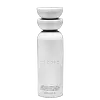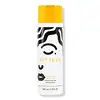What's inside
What's inside
 Key Ingredients
Key Ingredients

 Benefits
Benefits

 Concerns
Concerns

 Ingredients Side-by-side
Ingredients Side-by-side

Water
Skin ConditioningSodium C14-16 Olefin Sulfonate
CleansingMicrocrystalline Cellulose
AbsorbentCocamidopropyl Hydroxysultaine
CleansingSodium Cocoyl Isethionate
CleansingAcrylates Copolymer
Glycerin
HumectantLactobacillus/Salix Purpurea Bark Ferment Extract
AntiseborrhoeicMelaleuca Alternifolia Leaf Oil
AntioxidantOlea Europaea Fruit Oil
MaskingMentha Piperita Oil
MaskingNiacinamide
SmoothingSodium Gluconate
Skin ConditioningLactobacillus
Skin ConditioningCitrus Limon Peel Oil
MaskingRosmarinus Officinalis Leaf Oil
MaskingMontmorillonite
AbsorbentMenthoxypropanediol
MaskingGlycol Distearate
EmollientPolyquaternium-7
Citric Acid
BufferingHydroxyacetophenone
AntioxidantSodium Hydroxide
BufferingEthylhexylglycerin
Skin ConditioningPotassium Sorbate
PreservativePhenoxyethanol
PreservativeTocopherol
AntioxidantLactic Acid
BufferingSodium Benzoate
MaskingTetrasodium EDTA
Limonene
PerfumingWater, Sodium C14-16 Olefin Sulfonate, Microcrystalline Cellulose, Cocamidopropyl Hydroxysultaine, Sodium Cocoyl Isethionate, Acrylates Copolymer, Glycerin, Lactobacillus/Salix Purpurea Bark Ferment Extract, Melaleuca Alternifolia Leaf Oil, Olea Europaea Fruit Oil, Mentha Piperita Oil, Niacinamide, Sodium Gluconate, Lactobacillus, Citrus Limon Peel Oil, Rosmarinus Officinalis Leaf Oil, Montmorillonite, Menthoxypropanediol, Glycol Distearate, Polyquaternium-7, Citric Acid, Hydroxyacetophenone, Sodium Hydroxide, Ethylhexylglycerin, Potassium Sorbate, Phenoxyethanol, Tocopherol, Lactic Acid, Sodium Benzoate, Tetrasodium EDTA, Limonene
Water
Skin ConditioningSodium C14-16 Olefin Sulfonate
CleansingCocamidopropyl Betaine
CleansingSodium Chloride
MaskingSodium Glycolate
BufferingCocamidopropyl Dimethylamine
EmulsifyingSodium Benzoate
MaskingGlycerin
HumectantPolysorbate 20
EmulsifyingPolyquaternium-10
Phenoxyethanol
PreservativeParfum
MaskingAloe Barbadensis Leaf Extract
EmollientCitric Acid
BufferingSodium Sulfite
PreservativePotassium Sorbate
PreservativePEG-120 Methyl Glucose Dioleate
EmulsifyingDecyl Glucoside
CleansingDisodium EDTA
Guar Hydroxypropyltrimonium Chloride
Skin ConditioningPanthenol
Skin ConditioningEthylhexylglycerin
Skin ConditioningCamellia Sinensis Leaf Extract
AntimicrobialCucumis Sativus Fruit Extract
EmollientCocos Nucifera Fruit Extract
EmollientCocos Nucifera Oil
MaskingPEG-60 Hydrogenated Castor Oil
EmulsifyingRosmarinus Officinalis Leaf Extract
AntimicrobialHelianthus Annuus Seed Oil
EmollientPhenethyl Alcohol
MaskingCaprylyl Glycol
EmollientButyrospermum Parkii Butter
Skin ConditioningCaryodendron Orinocense Seed Oil
EmollientWater, Sodium C14-16 Olefin Sulfonate, Cocamidopropyl Betaine, Sodium Chloride, Sodium Glycolate, Cocamidopropyl Dimethylamine, Sodium Benzoate, Glycerin, Polysorbate 20, Polyquaternium-10, Phenoxyethanol, Parfum, Aloe Barbadensis Leaf Extract, Citric Acid, Sodium Sulfite, Potassium Sorbate, PEG-120 Methyl Glucose Dioleate, Decyl Glucoside, Disodium EDTA, Guar Hydroxypropyltrimonium Chloride, Panthenol, Ethylhexylglycerin, Camellia Sinensis Leaf Extract, Cucumis Sativus Fruit Extract, Cocos Nucifera Fruit Extract, Cocos Nucifera Oil, PEG-60 Hydrogenated Castor Oil, Rosmarinus Officinalis Leaf Extract, Helianthus Annuus Seed Oil, Phenethyl Alcohol, Caprylyl Glycol, Butyrospermum Parkii Butter, Caryodendron Orinocense Seed Oil
Alternatives
Ingredients Explained
These ingredients are found in both products.
Ingredients higher up in an ingredient list are typically present in a larger amount.
Citric Acid is an alpha hydroxy acid (AHA) naturally found in citrus fruits like oranges, lemons, and limes.
Like other AHAs, citric acid can exfoliate skin by breaking down the bonds that hold dead skin cells together. This helps reveal smoother and brighter skin underneath.
However, this exfoliating effect only happens at high concentrations (20%) which can be hard to find in cosmetic products.
Due to this, citric acid is usually included in small amounts as a pH adjuster. This helps keep products slightly more acidic and compatible with skin's natural pH.
In skincare formulas, citric acid can:
While it can provide some skin benefits, research shows lactic acid and glycolic acid are generally more effective and less irritating exfoliants.
Most citric acid used in skincare today is made by fermenting sugars (usually from molasses). This synthetic version is identical to the natural citrus form but easier to stabilize and use in formulations.
Read more about some other popular AHA's here:
Learn more about Citric AcidEthylhexylglycerin (we can't pronounce this either) is commonly used as a preservative and skin softener. It is derived from glyceryl.
You might see Ethylhexylglycerin often paired with other preservatives such as phenoxyethanol. Ethylhexylglycerin has been found to increase the effectiveness of these other preservatives.
Glycerin is already naturally found in your skin. It helps moisturize and protect your skin.
A study from 2016 found glycerin to be more effective as a humectant than AHAs and hyaluronic acid.
As a humectant, it helps the skin stay hydrated by pulling moisture to your skin. The low molecular weight of glycerin allows it to pull moisture into the deeper layers of your skin.
Hydrated skin improves your skin barrier; Your skin barrier helps protect against irritants and bacteria.
Glycerin has also been found to have antimicrobial and antiviral properties. Due to these properties, glycerin is often used in wound and burn treatments.
In cosmetics, glycerin is usually derived from plants such as soybean or palm. However, it can also be sourced from animals, such as tallow or animal fat.
This ingredient is organic, colorless, odorless, and non-toxic.
Glycerin is the name for this ingredient in American English. British English uses Glycerol/Glycerine.
Learn more about GlycerinPhenoxyethanol is a preservative that has germicide, antimicrobial, and aromatic properties. Studies show that phenoxyethanol can prevent microbial growth. By itself, it has a scent that is similar to that of a rose.
It's often used in formulations along with Caprylyl Glycol to preserve the shelf life of products.
Potassium Sorbate is a preservative used to prevent yeast and mold in products. It is commonly found in both cosmetic and food products.
This ingredient comes from potassium salt derived from sorbic acid. Sorbic acid is a natural antibiotic and effective against fungus.
Both potassium sorbate and sorbic acid can be found in baked goods, cheeses, dried meats, dried fruit, ice cream, pickles, wine, yogurt, and more.
You'll often find this ingredient used with other preservatives.
Learn more about Potassium SorbateSodium Benzoate is a preservative. It's used in both cosmetic and food products to inhibit the growth of mold and bacteria. It is typically produced synthetically.
Both the US FDA and EU Health Committee have approved the use of sodium benzoate. In the US, levels of 0.1% (of the total product) are allowed.
Sodium benzoate works as a preservative by inhibiting the growth of bacteria inside of cells. It prevents the cell from fermenting a type of sugar using an enzyme called phosphofructokinase.
It is the salt of benzoic acid. Foods containing sodium benzoate include soda, salad dressings, condiments, fruit juices, wines, and snack foods.
Studies for using ascorbic acid and sodium benzoate in cosmetics are lacking, especially in skincare routines with multiple steps.
We always recommend speaking with a professional, such as a dermatologist, if you have any concerns.
Learn more about Sodium BenzoateSodium C14-16 Olefin Sulfonate is a cleansing agent made from a mixture of long chain sulfonate salts. It can also help produce foam.
This ingredient may be drying. We recommend speaking with a professional if you have concerns.
Water. It's the most common cosmetic ingredient of all. You'll usually see it at the top of ingredient lists, meaning that it makes up the largest part of the product.
So why is it so popular? Water most often acts as a solvent - this means that it helps dissolve other ingredients into the formulation.
You'll also recognize water as that liquid we all need to stay alive. If you see this, drink a glass of water. Stay hydrated!
Learn more about Water